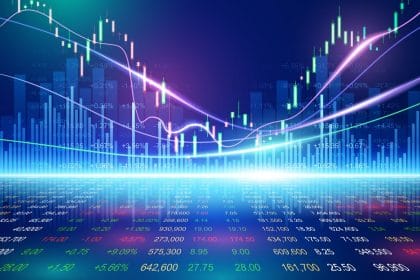Tron (TRX) price forecast for 2025–2030 with insights on token utility, growth drivers, market trends, and long-term investment ou...
What Is a Stochastic Oscillator?
Last Updatedby Osaemezu Ogwu · 3 mins read

Check out this guide to learn what stochastic oscillator entails, how to use it, and how it prepares traders for the future price movements.
The stochastic oscillator is described as a momentum indicator. It uses an asset’s price at close to contrast with its price range within a specified period. Also, the responsiveness of this trading indicator to price movements can be adjusted by either increasing or reducing the period. Adjustments can also be made by determining the result’s moving average.
On the other hand, a stochastic oscillator moves between certain values (0-100). The range this oscillator falls, denotes it is in an overpriced or underpriced zone. Also, this indicator can vary at a certain mean price due to the fact that the past performance of an asset is used.
Formula and Examples
Stochastic Oscillator’s formula is given by:
%K=(C−L14/H14−L14)×100
where: C = An asset’s most recent closing price; L14 = The least price the asset traded of the 14 previous trading sessions; H14 = The highest price traded of the 14-day period; %K = the stochastic indicator’s current value.
Description
Sometimes, %K is known as the slow stochastic indicator. There’s also the “speedy” stochastic indicator and it is denoted by %D = 3-period MA of %K.
The oscillator is also backed by a theory that in a market with an uptrend, the prices may tend to close around the high. Contrastingly, prices in a downtrend market will tend to close around the low. Traders also rely on this indicator as a signal for entry or exit if %K crosses through %D. The latter is a moving average whose period is three.
An example using the formula above is having a 14-day high is $90, and the low as $75, whereas the current close is $85. The data will be represented as 85-75/(90-75) * 100, or 67. At this range, it would mean that the indicator is approaching the overbought zone.
On the other hand, a trader needs to activate or turn on the stochastic oscillator on the trading tool they are using. And once that is in place, they can use the indicator with its default period, which is 14 days. However, they can choose to modify this period.
What Stochastic Oscillator Indicates
The stochastic indicator reflects overbought and oversold zones. Here, the indicator roams between 0 and 100. Levels that are above 80 are known as an overbought zone whereas below 20 is regarded as oversold. The indicator can remain in either of these zones for a long or short time depending on the power of the trend. As such, the reading of the oscillator may not always translate into an upcoming reversal is underway. However, it prepares traders for future price movements.
Coupled with that, there are two lines on the stochastic oscillator chart. One of these lines denotes the oscillator’s value in each session whereas the other line denotes its 3-day SMA. When these lines intersect, it gives a signal that price may reverse to the upside or downside depending on the direction of the lines. Consideration is also given to the divergence that occurs between the price action and oscillator.
This guide explains how to buy TOKEN6900, a new meme coin project with an attractive market capitalization. Learn how to join the ...
Pepe Coin surged in popularity after its 2023 launch. This article covers market trends, price forecasts, technical signals, and h...